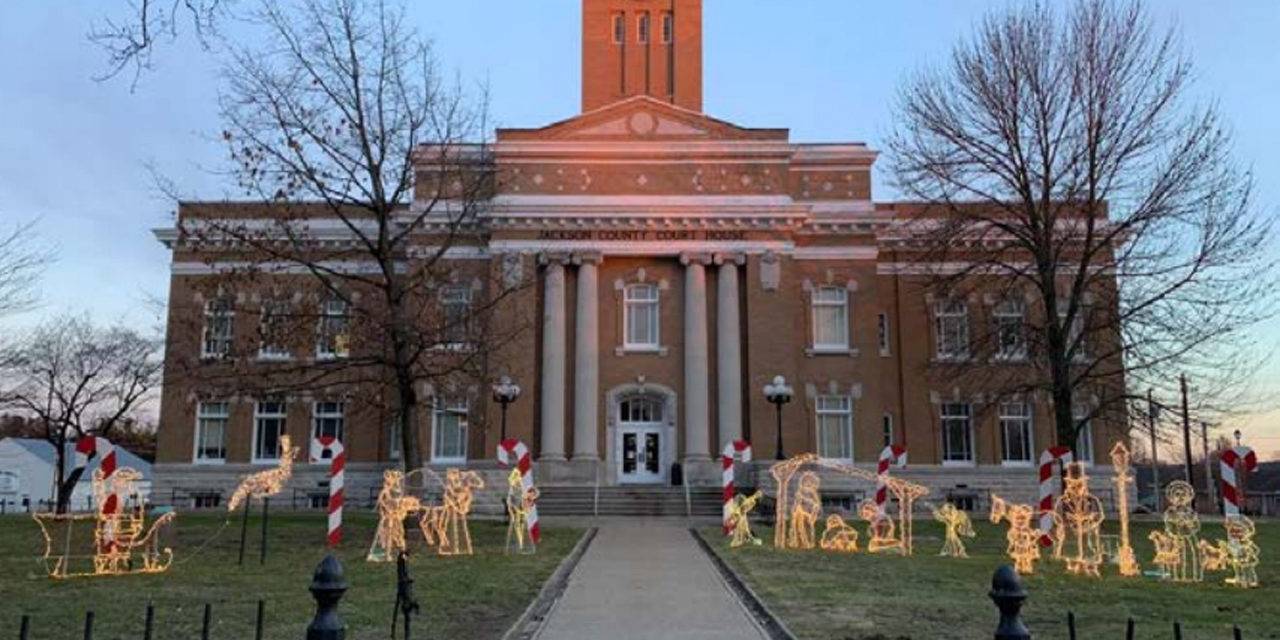A federal appeals court has upheld the constitutionality of a Nativity scene display on the lawn of an Indiana courthouse at Christmas, underscoring an increasingly conservative shift in the nation’s jurisprudence on the issue of religion – at least where religious displays are concerned. And that shift can be traced not only to the addition of conservative justices to the nation’s highest court, but also to a larger trend, joined by conservatives and liberals on the bench, toward respecting the nation’s history and traditions while rejecting culture war legal brawls initiated by militant atheists.
In Woodring v. Jackson County, the 7th U.S. Circuit Court of Appeals in Chicago overturned a lower court decision finding a Christmas display in Jackson County, Indiana, unconstitutional that included a Nativity scene along with various secular decorations and displays of the season. The appeals court decided that a 2019 U.S. Supreme Court decision in American Legion v. American Humanist Association changed the way lower courts are required to analyze First Amendment challenges to passive displays that include religious elements.
The 7th Circuit panel split 2-1, with a Clinton-appointed judge joining in the majority opinion written by Judge Amy St. Eve, a Trump appointee.
“We hold, however, that the Supreme Court’s recent decision in American Legion v. American Humanist Association, 139 S. Ct. 2067 (2019), requires us to use a different, more historical framework to gauge the constitutionality of the County’s Nativity scene,” the decision reads. “Applying American Legion, we conclude that the County’s Nativity scene is constitutional because it fits within a long national tradition of using the Nativity scene in broader holiday displays to celebrate the origins of Christmas—a public holiday.
“Applying American Legion, we hold that Jackson County’s nativity scene as displayed in 2019 does not violate the Establishment Clause.”
In American Legion, a cross – known as the Bladensburg Peace Cross – was erected on private property in the 1920s that ultimately came under government ownership. The monument honored the sacrifices of local residents who fought and died in World War I. When challenged as a violation of the First Amendment 90 years later, the Supreme Court decided, in a 7-2 opinion, that the cross could stay.
The high court’s decision rested heavily on a historical analysis of why the statue was built, and whether it was part of a longstanding American tradition. In doing so, the high court changed the way courts would look at these cases, and in Indiana’s case, the 7th Circuit followed the Supreme Court’s lead.
Most of the challenges to Christmas displays on government property come from plaintiffs concerned about the so-called separation of church and state, a euphemism used in a couple Supreme Court cases to describe the Establishment Clause of the First Amendment (“Congress shall make no law respecting an establishment of religion…”).
Significantly, even liberal-leaning justices Stephen Breyer and Elena Kagan joined with the five conservatives in reaching the American Legion decision protecting the Bladensburg Peace Cross. That in itself indicates that a super-majority of the high court favors staying out of culture war challenges to long-standing historical displays that include religious elements.
We can also look to Justice Breyer’s 2005 concurring opinion in a Texas case involving a 10 Commandments display on the lawn of the state Capitol. In that case, Van Orden v. Perry, Breyer took a pragmatic approach to ending such disputes, which has serendipitously aligned with the views of his more conservative colleagues.
“This display has stood apparently uncontested for nearly two generations,” Breyer wrote. “That experience helps us understand that as a practical matter of degree this display is unlikely to prove divisive. And this matter of degree is, I believe, critical in a borderline case such as this one.
“At the same time, to reach a contrary conclusion here, based primarily upon the religious nature of the tablets’ text would, I fear, lead the law to exhibit a hostility toward religion that has no place in our Establishment Clause traditions. Such a holding might well encourage disputes concerning the removal of longstanding depictions of the Ten Commandments from public buildings across the Nation. And it could thereby create the very kind of religiously based divisiveness that the Establishment Clause seeks to avoid.”
As the culture wars continue to heat up, a major bright spot in the court battles over the freedom of religion has been the growing legal protection given to Nativity scenes, crosses and other religious monuments and acknowledgments on government land that are part of our nation’s traditions. The Jackson County, Indiana, Nativity scene decision is just the latest development in that welcome trend.
Photo from Jackson County






